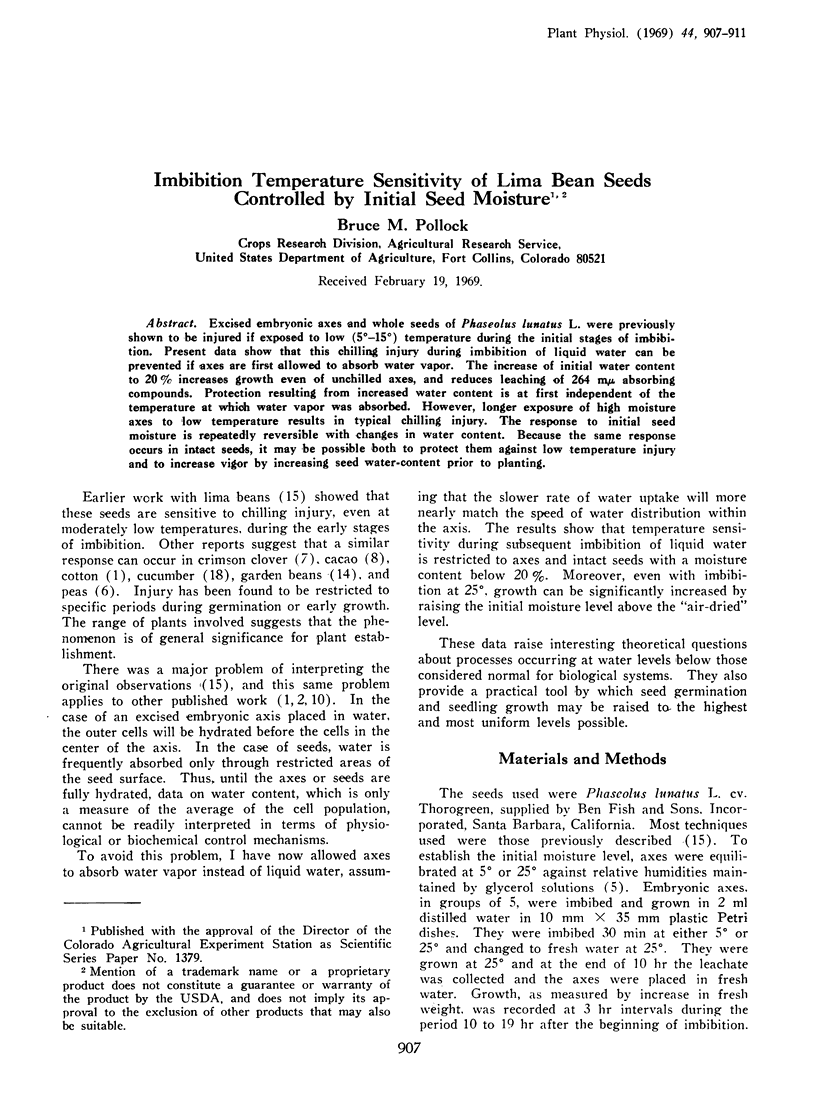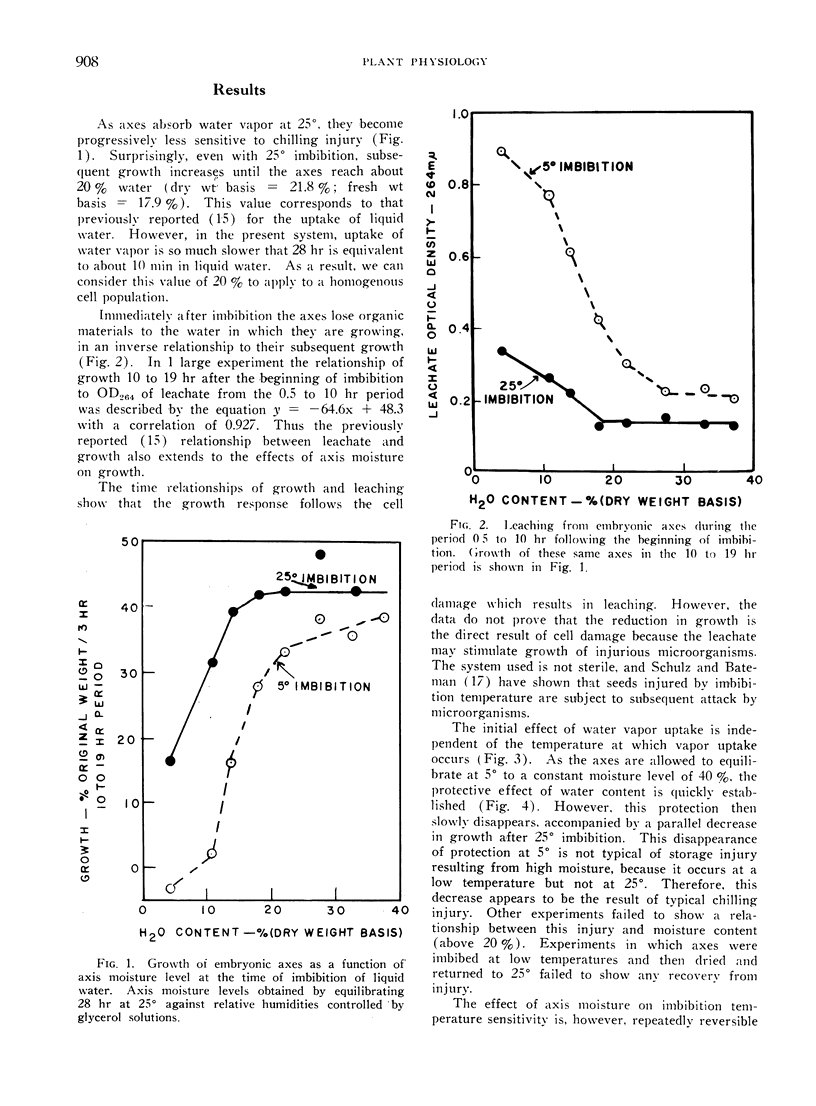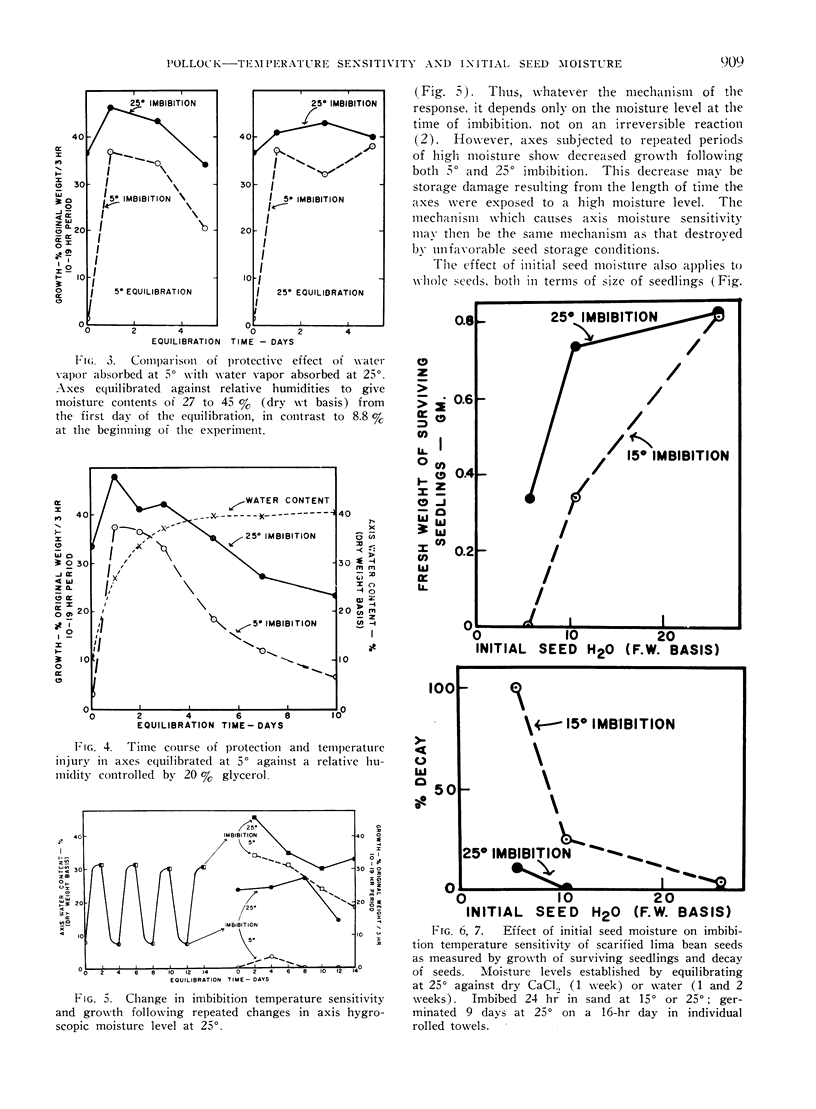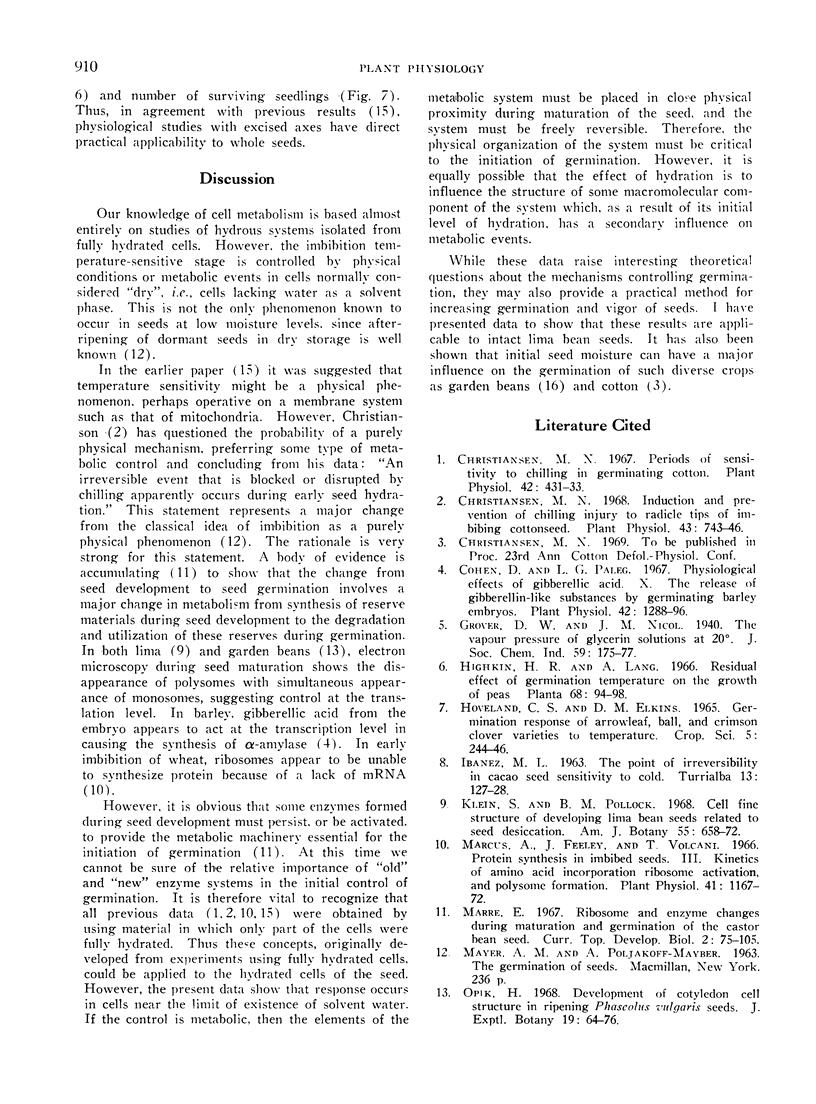Abstract
Excised embryonic axes and whole seeds of Phaseolus lunatus L. were previously shown to be injured if exposed to low (5°-15°) temperature during the initial stages of imbibition. Present data show that this chilling injury during imbibition of liquid water can be prevented if axes are first allowed to absorb water vapor. The increase of initial water content to 20% increases growth even of unchilled axes, and reduces leaching of 264 mμ absorbing compounds. Protection resulting from increased water content is at first independent of the temperature at which water vapor was absorbed. However, longer exposure of high moisture axes to low temperature results in typical chilling injury. The response to initial seed moisture is repeatedly reversible with changes in water content. Because the same response occurs in intact seeds, it may be possible both to protect them against low temperature injury and to increase vigor by increasing seed water-content prior to planting.
Full text
PDF




Selected References
These references are in PubMed. This may not be the complete list of references from this article.
- Christiansen M. N. Induction and prevention of chilling injury to radicle tips of imbibing cottonseed. Plant Physiol. 1968 May;43(5):743–746. doi: 10.1104/pp.43.5.743. [DOI] [PMC free article] [PubMed] [Google Scholar]
- Christiansen M. N. Periods of sensitivity to chilling in germinating cotton. Plant Physiol. 1967 Mar;42(3):431–433. doi: 10.1104/pp.42.3.431. [DOI] [PMC free article] [PubMed] [Google Scholar]
- Cohen D., Paleg L. G. Physiological effects of gibberellic Acid. X. The release of gibberellin-like substances by germinating barley embryos. Plant Physiol. 1967 Sep;42(9):1288–1296. doi: 10.1104/pp.42.9.1288. [DOI] [PMC free article] [PubMed] [Google Scholar]
- Marcus A., Feeley J., Volcani T. Protein Synthesis in Imbibed Seeds III. Kinetics of Amino Acid Incorporation Ribosome Activation, and Polysome Formation. Plant Physiol. 1966 Sep;41(7):1167–1172. doi: 10.1104/pp.41.7.1167. [DOI] [PMC free article] [PubMed] [Google Scholar]
- Marrè E. Ribosome and enzyme changes during maturation and germination of the castor bean seed. Curr Top Dev Biol. 1967;2:75–105. doi: 10.1016/s0070-2153(08)60284-7. [DOI] [PubMed] [Google Scholar]
- Pollock B. M., Toole V. K. Imbibition period as the critical temperature sensitive stage in germination of lima bean seeds. Plant Physiol. 1966 Feb;41(2):221–229. doi: 10.1104/pp.41.2.221. [DOI] [PMC free article] [PubMed] [Google Scholar]


